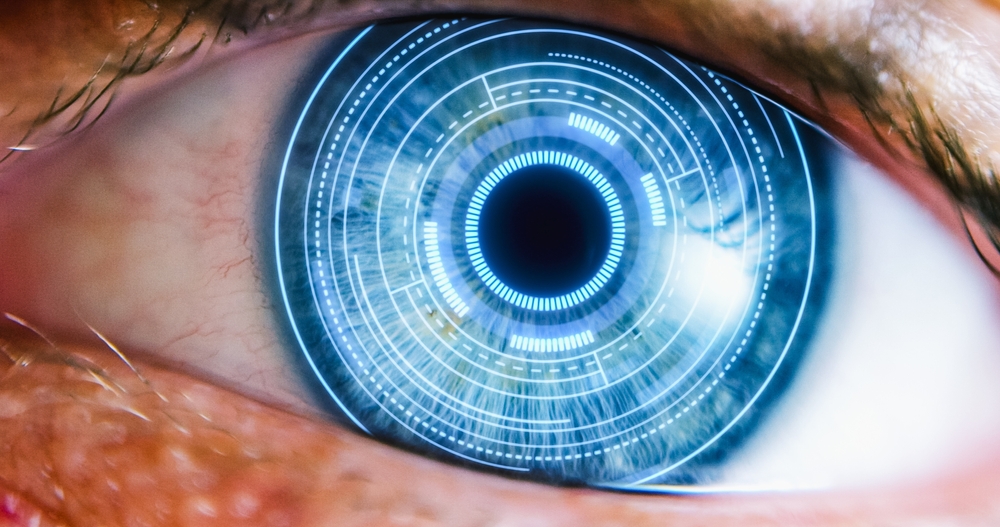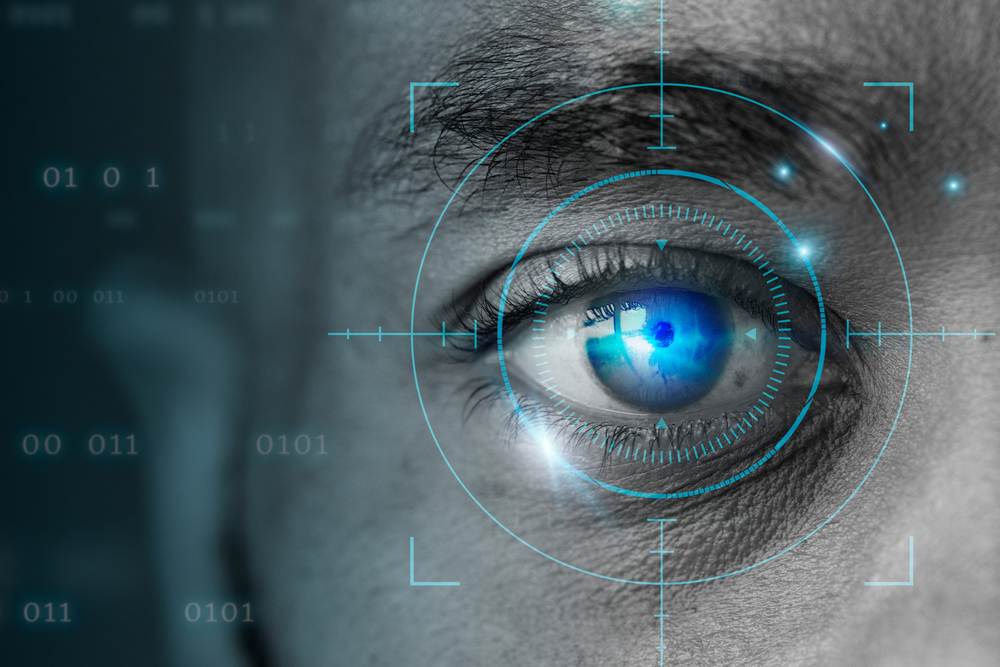New Infrared Contacts Let You See in the Dark Even With Your Eyes Shut

For most of human history, we’ve taken our five senses as the full story of experience. We trusted our eyes to show us the truth, our sight to guide our way. But what if our eyes were missing something vital—not because the world is limited, but because we are? In a world overflowing with information, light, energy—how much have we trained ourselves to ignore simply because we couldn’t perceive it?
A team of scientists has quietly changed that. They’ve created something as small as a contact lens, but as expansive as a shift in human potential: infrared vision, embedded in the eye. Not in the distant future. Not in the pages of a sci-fi novel. Now. With these lenses, you can see in the dark. You can detect signals where others see emptiness. You can experience color where before there was only void. Even with your eyes closed.

Seeing the Unseen – The Science Behind Infrared Vision Lenses
Imagine being able to see in total darkness—not with the aid of goggles or headsets, but through a simple contact lens. That’s the reality researchers have brought to life by blending neuroscience with cutting-edge materials science. In a groundbreaking study published in Cell, scientists developed a transparent, battery-free contact lens that allows the wearer to perceive infrared light—something normally invisible to the human eye. These lenses contain specially engineered nanoparticles that absorb near-infrared light, ranging from 800 to 1600 nanometers, and convert it into visible wavelengths the eye can naturally detect. It’s a transformation of perception: from blind to aware, from darkness to detail. What’s even more astonishing is that this vision doesn’t disappear when your eyes close. Infrared light passes through the eyelid more effectively than visible light, meaning the lenses can still function even with shut eyes—offering a rare glimpse into a reality usually beyond reach.
Unlike conventional night vision tools that require external power or bulky hardware, these lenses are compact, seamless, and noninvasive. They’re created using biocompatible polymers—the same materials used in soft contacts—making them safe and practical for everyday use. The lead researcher, Tian Xue, describes this technology as the dawn of superhuman sight, and he’s not exaggerating. This isn’t just an incremental improvement in wearables—it’s a redefinition of what’s possible. With applications ranging from emergency response to augmented reality and accessibility, the potential is as vast as the unseen spectrum it taps into. This isn’t just about seeing in the dark. It’s about expanding human capability, challenging our biological limits, and redefining the boundaries of perception.
This breakthrough forces us to reconsider a question we rarely ask: What else are we missing in the world around us simply because we lack the tools to perceive it? Sometimes, it’s not about changing the world—it’s about changing how we see it.

From Lab to Life – Testing Superhuman Sight
To move from possibility to proof, the researchers turned to both animal and human testing—and the results were nothing short of compelling. In controlled experiments, mice fitted with the infrared contact lenses displayed clear signs of being able to perceive near-infrared light. When given the choice between a dark enclosure and one illuminated only with infrared, the mice wearing the lenses consistently chose the dark space, indicating they could detect the otherwise invisible light. In contrast, mice without the lenses showed no preference, reinforcing the claim that the lenses had enabled a new form of perception. But the evidence didn’t stop at behavior. Physiological responses told the same story: the pupils of the lens-wearing mice constricted in the presence of infrared light, and their brain activity spiked in visual processing regions, confirming that the experience wasn’t imagined—it was real.
Human trials were just as telling. Participants wearing the lenses could accurately identify flashing infrared signals, even when shaped to mimic Morse code patterns. They could also discern the direction from which the signals originated—an ability that becomes even more remarkable considering that, without the lenses, they saw nothing at all. Lead scientist Tian Xue summed it up simply: “The difference is unmistakable.” These weren’t subtle improvements or placebo effects; they were dramatic shifts in perception that could be measured, repeated, and verified. The ability to decode infrared cues with clarity opens a door to uses far beyond the lab, from communications in low-visibility environments to discreet signaling in high-security fields.
But beyond the data and measurable outcomes lies something deeper. These tests are proof that our senses are not fixed—they are expandable. That what we take as the limits of perception may only be the limits of current tools. The moment a human being puts on a lens and begins to experience something they’ve never seen before—something previously believed to be out of reach—a boundary is erased. Not just a biological one, but a mental one. It’s a reminder that human potential is not a static trait but a frontier constantly being redrawn. What else could we discover, what else could we feel, if we gave ourselves the means to go beyond what we’ve always accepted as normal? Technology like this doesn’t just change how we see—it changes what we believe is possible.

Beyond Night Vision – Color, Communication, and Accessibility
The ability to see in the dark is impressive, but these lenses don’t stop there. What sets them apart from traditional night vision is their capacity to differentiate between various infrared wavelengths and convert each into a distinct visible color. Through precision engineering, the nanoparticles embedded in the lenses emit specific hues in response to different infrared signals—turning 980 nanometers into blue, 808 into green, and 1,532 into red. This color-coding system enables the wearer not just to see infrared light, but to interpret it in a layered, meaningful way. It opens the door to more than vision—it allows for recognition, categorization, even silent communication in environments where traditional methods would fail.
Perhaps one of the most powerful implications of this feature is its potential to assist people with color vision deficiencies. By remapping wavelengths into colors a color-blind person can perceive, the technology could provide new ways to navigate a world they’ve always experienced differently. For someone who struggles to distinguish red from green, a common form of color blindness, this could mean perceiving vital visual information that was once out of reach—whether it’s reading a signal, navigating a digital interface, or simply seeing the world in fuller detail. Lead researcher Tian Xue explains that these lenses could “make the invisible visible” not just for the average eye, but for those who’ve lived without access to the full spectrum all along.
This shift isn’t just technological—it’s human. It’s about bridging gaps, restoring missing pieces, and reimagining what inclusivity can look like. When technology serves not just to dazzle but to empower, to restore agency and broaden participation, it becomes something more than innovation—it becomes a form of justice. And in that sense, these lenses aren’t just about seeing in the dark. They’re about shedding light where it’s always been needed.

Limitations, Challenges, and the Road Ahead
As groundbreaking as this technology is, it’s still in its early stages—and like any powerful tool, it comes with limitations. One of the key challenges lies in the clarity of the infrared images. Because the nanoparticles are embedded close to the retina, the converted light can scatter slightly, which reduces the resolution of what the wearer sees. In situations where precision is critical—like identifying fine details in a smoky rescue operation or interpreting subtle visual cues—this loss of sharpness matters. To address this, the research team has developed a complementary wearable glasses system that uses the same nanoparticle technology but offers a higher-resolution experience, striking a balance between immersion and clarity.
Another technical constraint is sensitivity. At present, the lenses can only detect infrared signals emitted from high-intensity LED sources. This limits their usefulness in environments where weaker or ambient infrared light is the only source available. However, the researchers are actively working to improve this. Collaborating with optical experts and materials scientists, they aim to enhance the sensitivity and spatial resolution of the nanoparticles so that the lenses can perform under a wider range of real-world conditions. The goal is to create a version of the lens that not only sees clearly in the dark but also captures fine detail in low-signal scenarios—making it viable for broader use in emergency response, military operations, and even everyday civilian applications.
These limitations don’t undermine the innovation—they give it direction. Every breakthrough starts with boundaries that define its first form. What matters most is that the work doesn’t stop here. With continued refinement and rigorous testing, these lenses are evolving from a proof of concept into a tool that could reshape how we move through the world. The question is no longer if this will change lives—it’s how far it will go.
Loading...

